Get Started for FREE
Sign up with Facebook Sign up with X
I don't have a Facebook or a X account

 Your new post is loading... Your new post is loading...
 Your new post is loading... Your new post is loading...
Where did the idea that startups write business plans come from? In the early days of venture capital, investors and entrepreneurs were familiar with the format of business plans from large companies and adopted it for startups. Without much thought it has been used ever since.
A business plan is the execution document that existing companies write when planning product-line extensions where customer, market and product features are known. The plan is an operating document describes the execution strategy for addressing these “knowns.” A startup is not about executing a series of knowns. Most startups are facing a series of unknowns – unknown customer segments, unknown customer needs, unknown product feature set, etc. That means that writing a static business plan first adds no value to starting a company, as the plan does not represent the iterative nature of the search for the model.
From the Wall Street Journal article intro: "A retired eight-time serial entrepreneur, Steve’s insight that startups are not small versions of large companies is reshaping the way startups are built and how entrepreneurship is taught. His observation that large companies execute business models, but startups search for them, led him to realize that startups need their own tools, different than those used to manage existing companies." Bio & Books: http://blogs.wsj.com/accelerators/steve-blank/ Free & Near Free Tips: http://steveblank.com/2012/11/27/open-source-entrepreneurship/
Via Peter Hoeve
Robin Good: The Lean LaunchPad is a free online course taught by Steve Blank and based on the course by the same name that he teaches at Stanford, Berkeley, Columbia, Caltech and for the National Science Foundation. In his words: "It is the foundation every entrepreneur should have to build a successful startup." "Steve Blank is a retired serial entrepreneur-turned-educator who is changing how startups are built and how entrepreneurship is being taught. He created the Customer Development methodology that launched the lean startup movement, and wrote about the process in his first book, The Four Steps to the Epiphany. His second book, The Startup Owner's Manual, is a step-by-step guide to building a successful company." The course expected average completion time is estimated in two to four weeks. Free to enroll into. (Pay with a tweet) Preview of the course: http://www.startupplays.com/projects/view_preview/2024?preview=true More info: http://www.startupplays.com/plays/how-to-build-a-startup-the-lean-launchpad 
Robin Good's comment,
November 22, 2012 2:48 AM
Hi Victor, thank you for sharing the tool you have created. Much appreciated.
Could you kindly list the key advantages of using your tool versus one of the original existing ones? 
Victor Antofica's comment,
November 22, 2012 3:48 AM
Hi Robin, I think my tool si very simple and you can use it immediately, no registration required. Also it automatically resizes to your browser window size. And it's mobile friendly.

daniele ficco's comment,
December 13, 2012 2:37 PM
I got the book, it's great book with the best book packaging and illustration I ever seen
Robin Good: If you are looking for ways to sell your own merchandise, product or service on Pinterest here is new service that helps you do just that. ShopInterest.co is an e-commerce platform that lets anyone turn their Pinterest boards into online stores making it easy for anyone to sell most any kind of merchandise to their Pinterest followers. How it works: "The easiest way to describe what the service does is to call it a “Shopify for Pinterest.” Like Shopify, ShopInterest is a DIY service, but in this case, it’s not about building a traditional online store – it’s about turning your Pinterest board into a store. To get started with the service, users sign in, select the boards where their products are shown, add a description, price and shipping charges, and select how they want to get paid. The rest of the setup is handled by ShopInterest." Check this video on how to set up your store: http://www.shopinterest.co/how Try it out now: http://www.shopinterest.co/ N.B.: For now the service is open only to US-based individuals.
Robin Good: The Product Canvas is a web-based visual framework that allows an agile product manager or micro-entrepreneur to sketch out the key traits, constraints, stories and characteristics of a new digital product and to refine it and model it as it evolves. The Product Canvas strongly leverages the concept of "personas" to help capturing the desired user experience including the user interaction and the user interface design. From RomanPichler.com: "The Product Canvas brings together the key pieces of information necessary to create a new product: the users and customers with their needs, the product’s functionality and design, and the user interaction. It’s intended to be a collaborative tool that helps you state your ideas and assumptions, test them, and integrate the insights you gain." "The Product Canvas describes the target group and the product features, but not the business model including the revenue sources and the cost structure. While I have intentionally kept the canvas focussed, I have designed it to be compatible with the Alexander Osterwalder’s and Yves Pigneur’s Business Model Canvas." "...There is a small overlap between the two canvases, as both consider the market and the value proposition." But this does not have to be an issue as you can use the Business Model Canvas to capture the market and value proposition at a high-level, and the details for one specific product on the Product Canvas." Test a web-based version: http://bmfiddle.com/f/#/ (how to use it: http://bmfiddle.com/tour.html) Read more about it: http://www.romanpichler.com/blog/agile-product-innovation/the-product-canvas/
Robin Good: If you are looking for a few examples of successful, self-funded startups, I have put together a small but growing collection of web companies that have reached profitability and success online without resorting to any form of initial funding or seeding by banks or venture capitalists. Here they are: http://pinterest.com/robingood/successful-self-funded-startups/ P.S.: If you know of other companies that should belong in this list do not hesitate to suggest them for inclusions.
Robin Good: Sellbox is a new service which allows you to easily sell files you host on Dropbox. "Sellbox is giving people a way to monetize the content in their Dropbox folder. The company lets users set a price for Dropbox files, share a link to those files with their social networks, and process payments through PayPal." "Sellbox turns Dropbox into an ecommerce platform. After connecting their Dropbox account, users select the files they want to sell, then set a file name and price. Sellers can share their files on Twitter or Facebook or via a shortened link, and buyers can pay for the files via PayPal. When a file is sold, the seller gets 91 percent of the sale and Sellbox keeps the remaining nine percent." Source: http://betakit.com/2012/07/30/sellbox-turns-dropbox-into-an-ecommerce-platform Try it out now: http://sellboxhq.com/
Robin Good: Tikly is a Facebook-integrated ticketing alternative to the likes of Eventbrite and Ticketfly, making it extremely easy for a) bands, b) venues and c) event organizers (online and offline) to sell their own tickets without intermediaries and with very little overhead. Tikly charges:
From Mashable: "Tikly is a new ticketing service that’s fully integrated with Facebook. Artists, venues and events can sell directly from their Facebook page — without fans being re-directed to another site." Tikly is fully integrated with Dwolla, a mobile payment system with a flat fee of $0.25 for anything over $10. See an example of Tikly integrated in Facebook as a tab: https://www.facebook.com/thenadas https://www.facebook.com/thenadas/app_225767600868523 Find out more: http://www.tikly.co/ Image credit: Shutterstock
Robin Good: Interesting news from two of the large traditional newspapers with online editions who have been using a paywall strategy. Things are going well. This is in essence what the numbers say, at least according to this short report by Dashiel Bennet on the Atlantic Wire. He writes: "The New York Times and the Financial Times each announced big declines in overall revenue this week, as the media advertising business continues to struggle. However, on the bright side, paid subscriptions to The Times' website continue to rise, even beyond what a lot of people suspected when The Times relaunched its paywall last year. As a result, the paper now makes more money from circulation revenue — that is, people who actually pay to read it — than it does from ads. That's a historic change that flips the entire model of the newspaper business on its head. Meanwhile, FT, which is one of the few newspapers to have an even more restrictive paywall than The Times, announced that for the first time ever they now have more online subscribers than print subscribers." Informative. Well referenced. 8/10 Full article: http://www.theatlanticwire.com/business/2012/07/online-news-subscriptions-might-actually-be-working/55112/
From
gigaom
Robin Good: Interesting short article at GigaOM by Rag Srinivasan, highlighting the not too well known story of how "freemium" came about thanks to a number of tests that were run by MIT behavioral economists. The article questions the freemium model strategy which hopes to extract a sufficient number of paying customers from a much larger free user base. And I agree. But freemium can be still an effective business model as long as you do take into serious considerations the key questions posed in this article before centering your future marketing strategy on it. Good questions being asked. 8/10 Full article: http://gigaom.com/2012/07/21/freemium-has-run-its-course/
Robin Good: What is it that drives an increasing number of people to develop small, micro-businesses online instead of looking for the next best-paying position inside a company? From the original article at Co.Exist: "The micro-entrepreneurship economy--an economy that allows people to make money off their skills and assets--is rapidly growing, led by an army of freelancers and fully employed workers who want to make extra cash on the side. 86% of respondents are looking for job independence. 80% are frustrated with the 9 to 5 grind. The top six frustrations: lack of freedom, not making enough cash, working regular business hours, reporting to a manager, commuting, and boredom. 72% of respondents say their primary motivation for joining Fiverr is the money. 40% of users started using the service to have fun while making money, and 32% are hoping to gain more professional experience. Some people aren’t straying far from their day jobs--42% offer skills that they also use in their full-time job. But 35% are angling to monetize a hobby." Informative. Interesting. 8/10 Read the whole article: http://www.fastcoexist.com/1680092/why-people-want-to-be-micro-entrepreneurs
From
sellfy
Robin Good: Sellfy is a new web service which allows you to upload e-books, music, video, software and to sell these items directly on Twitter, Facebook or on your own website with just a simple link. How it works: 1) Upload your product 2) Set the price 3) Share "buy now" URL on Facebook or Twitter or "buy now" buttons that can be embedded in any website. Features: http://sellfy.com/features Other key features:
Pricing: http://sellfy.com/pricing Try it out now: http://sellfy.com/
Robin Good: If you, like me, are a small online entrepreneur-publisher, not after venture capital, but interested in building a high-value information service that can effectively help people solve a problem out of your own expertise, know-how and passions, this article is a definite must-read. Jamie Wong writes: "...the discontented worker leaves behind the “security” of a corporate job in favor of his or her passions--is a new and growing behavior in post-industrial countries, particularly in the United States, Europe, and Australia. The media has named the growing trend toward micro-entrepreneurship “the Rise of the Creative Class," “the Gig Life," or "the freelance economy.” ... ...there’s one stark difference between micro-entrepreneurs today and the “Free Agent Nation” citizens of the late '90s: technology." ... This new freedom economy is working because it’s good for economic growth, and it’s growing because it can lead to better lives. But this technological revolution that enables greater autonomy and flexibility will also require a humane infrastructure to survive. (The article details which ones specifically). ... "New companies that empower individuals to become micro-entrepreneurs not only stimulate the economy by creating new revenue streams and disrupting outdated models of business, but provide individuals access to more fulfilling, rewarding, and authentic lives." Excellent read for individuals wanting to build a truly valuable service online to help others while creating their own sustainability. Highly recommended. 9/10 Full article: http://www.fastcoexist.com/1679903/the-rise-of-the-micro-entrepreneurship-economy |
Robin Good: If you feel in a straightjacket, having to create a traditional business plan for your upcoming web-based venture, you may find some comfort in this short article about business plans and startups. Investor and entrepreneur Brad Feld writes: "As an entrepreneur, I encourage you to reject the notion of a classical business plan from the 1970′s." From the original article on the Wall Street Journal, Accelerators section: "Today, it’s clear to me that business plans for startup companies are a historical artifact that represented the best approach at the time to define a business for potential investors. In the past decade, we’ve shifted from a “tell me about it” approach (the business plan) to a “show me” approach (the Lean Startup). Rather than write long exhaustive documents, entrepreneurs can rapidly prototype their product and get immediate user and market feedback." Rightful. 7/10 Full article: http://blogs.wsj.com/accelerators/2012/11/29/business-plans-are-an-historic-artifact/ 
Barbara Kurts's comment,
January 9, 2013 9:12 PM
my topics here http://www.scoop.it/t/health-leads-plus
Robin Good: How can journalists and small news companies become/remain profitable in the years to come? What are the business moels that news-based outlets and professionals can consider adopting in their effort to become/remain sustainable? A joint project of the University of Tampere, USC Annenberg and Waseda University in Tokyo, has decided to tackle these very set of questions by researching existing journalistic startups and analyzing their approach and results. "...there has been much lively discussion about the future of journalism and its business model. However, there has been little research or academic focus to date on the business models for for-profit journalism startups..." From the report Introduction: "Overall, advertising models that supported media offline seem – for the most part – unable to do so online. The fundamental trade on scarcity of space cannot hold value in abundant space. Yet advertising remains one of the bedrocks of revenue for most media organisations." "This report outlines how online-based journalistic startups have created their economical locker in the evolving media ecology. The research introduces the ways that startups have found sustainability in the markets of nine countries. The work is based on 69 case studies from Europe, USA and Japan. The case analysis shows that business models can be divided into two groups. a) The storytelling-oriented business models are still prevalent in our findings. These are the online journalistic outlets that produce original content – news and stories for audiences. b) But the other group, service-oriented business models, seems to be growing. This group consists of sites that don’t try to monetize the journalistic content as such but rather focuson carving out new functionality. The project was able to identify several revenue sources that include: 1. advertising, 2. paying for content, 3. affiliate marketing, 4. donations, 5. selling data or services, 6. organizing events, 7. freelancing and 8. training or 9. selling merchandise. Where it was hard to evidence entirely new revenue sources, it was however possible to find new ways in which revenue sources have been combined or reconfigured. The report also offers practical advice for those who are planning to start their own journalistic site." Useful. Informative. Pragmatical. 9/10 Report: Table of Contents - http://www.submojour.net/archives/989/table-of-contents/ Full report (PDF): http://tampub.uta.fi/handle/10024/66378
Robin Good: Here are five interesting web services, that help event organizers find and monetize their sponsorship opportunities, reviewed and analyzed for BizBash. Reviewed in the article by Mitra Sorrels:
Useful. Informative. Resourceful. 8/10 Full article: http://www.bizbash.com/5_new_digital_services_that_connect_events_and_sponsors/new-york/story/24502/
"... Successful online content providers no longer need to rely on ad spend. (There will be) fewer chances to reach consumers with ads." That's what Darika Ahrens, a Forrester analyst, suggests: "Marketers should start acting like content creators to get their messages across, because actual media companies could give up on advertising funding as people start paying for their material." "Thanks to technology developments, the outlook for content payments is positive. Of those providers who succeed at it, some will rely exclusively on user payments, and some, like The Financial Times, will seek to reduce advertising in their revenue mix as much as possible." Worth paying attention. 7/10 Full article: http://paidcontent.org/2012/11/01/as-paid-content-booms-will-ad-opportunities-shrink/
Robin Good: Interesting news from Google on this front, as early in October it has officially announced a new function of Googe Wallet which allows web publishers to charge small amounts of money to access in-depth articles or other high-value online content types. Digitaltrends reports: "Detailed on an official launch page for the product, Google quietly rolled out a new micropayments function for Google Wallet that allows site owners to charge small amounts of money for Web content. For instance, a site like Oxford Reference can charge between 25 to 99 cents for access to a single page of content. Within this live example, Oxford Reference offers the opening portion of the page for free. However, the code for Google Wallet is overlaying the remaining text with gray bars and blurring out the pictures until the reader pays 99 cents to view the remainder of the page. In addition, the reader has the option of an immediate refund of the access fee if they feel the content wasn’t a worthwhile purchase. However, the reader has to apply for the refund within 30 minutes of the initial purchase and Google has setup a system to help curtail excessive refunds awarded to a specific user over time." Read more: http://www.digitaltrends.com/web/google-launches-micropayments-for-web-content/ Here is where you can apply to adopt Google Wallet on your site: https://services.google.com/fb/forms/walletcontentinquiry/ Must-know stuff. 8/10 Full article: http://www.digitaltrends.com/web/google-launches-micropayments-for-web-content/
Robin Good: Citizenside is a French web startup which acts as a broker between you and potential buyers in the international media press, allowing you to contribute and sell images covering relevant news and events. From the official site: "Citizenside sells all kinds of photos and videos to the international media: events, accidents, sports, celebrities, miscellaneous stories... Most often, images sold are those that have a close link to news events." As a broker, Citizenside takes care of promoting your photos and of contacting media buyers on your behalf. In this way, not only will your pictures get exposure, but they may also get sold. This is how it works: You send Citizenside your photo or video and after it is reviewed by an editorial committee, it is immediately presented to their clientele of international media houses. I If your document is a scoop, then they negotiate the best price for you and provide you with up to 65% of the sale price. If your document isn't considered a scoop, it becomes integrated into the Citizenside image bank after validation by our editorial committee, and is immediatly available to international media to be sold at a fixed price. So, even images that are not "scoops" have commercial value for Citizenside as they can be still bought and used from the media. For more info on commission rates see: http://www.citizenside.com/en/how-sell-photos-videos/commission-rates.html "For newsrooms, the appeal of Citizenside resides in the credibility it adds to the pictures, which it carefully sources and checks – which explains why the French news agency AFP became one of its shareholders." In this same space check also: Demotix FAQ: http://www.citizenside.com/en/how-sell-photos-videos/faq.html More info: http://www.citizenside.com/
Robin Good: Here is a good article illustrating the several different alternatives available to any web designer to extend his revenue channels. The creation and sale of design templates, icons collections, ebooks, advertising as well as the development of dedicated tools, software and plugins can be just some of the many extra revenue-making options available. From the original article: "To summarize, the main lesson I’ve learned over the last couple of years is to have a long-term view and invest in yourself, not chase a quick buck. The plan is rather simple, then: build a network, cultivate a strong identity to ensure the network knows who you are, and then come up with a product you can market to it." Informative. Resorceful. 8/10 Full article: http://www.smashingmagazine.com/2012/08/27/designer-passive-income-experiments/
"Several startups tackling one-click online selling, letting users sell content with a link rather than a storefront. Based in Poznań, Poland, Sellbox is giving people a way to monetize the content in their Dropbox folder.
The company lets users set a price for Dropbox files, share a link to those files with their social networks, and process payments through PayPal. Founded in February 2012 and launched earlier this month, Sellbox is looking to become the go-to place for people looking to sell their online content. The idea is simple – Sellbox turns Dropbox into an ecommerce platform. After connecting their Dropbox account, users select the files they want to sell, then set a file name and price. Sellers can share their files on Twitter or Facebook or via a shortened link, and buyers can pay for the files via PayPal. When a file is sold, the seller gets 91 percent of the sale and Sellbox keeps the remaining nine percent." More info: http://sellboxhq.com/ Via Nebojsa Stojanovic
Robin Good: Extracting meaning out of big data, illustrating and visualizing relationships and links between apparently disconnected items and approaching the gathering of information for the purpose of surfacing what otherwise would not be immediately evident, may all be commercially fertile areas as some of the pionerring examples seem to show. From the original essay, part of the Data Journalism Handbook: "Many journalists seem to be unaware of the size of the revenue that is already generated through data collection, data analytics and visualization. This is the business of information refinement. With data tools and technologies it is increasingly possible to shed a light on highly complex issues, be this international finance, debt, demography, education and so on. ...These technologies can now be applied to journalism... But how does this generate money for journalism? The big, worldwide market that is currently opening up is all about transformation of publicly available data into something our that we can process: making data visible and making it human. We want to be able to relate to the big numbers we hear every day in the news — what the millions and billions mean for each of us. There are a number of very profitable data-driven media companies, who have simply applied this principle earlier than others. They enjoy healthy growth rates and sometimes impressive profits. a) One example: Bloomberg. The company operates about 300,000 terminals and delivers financial data to it’s users. If you are in the money business this is a power tool. ... This core business generates an estimated US $6.3 billion per year, at least this what a piece by the New York Times estimated in 2008. As a result, Bloomberg has been hiring journalists left, right and centre, they bought the venerable but loss-making “Business Week” and so on. b) Another example is the Canadian media conglomerate today known as Thomson Reuters. They started with one newspaper, bought up a number of well known titles in the UK, and then decided two decades ago to leave the newspaper business. Instead they have grown based on information services, aiming to provide a deeper perspective for clients in a number of industries. If you worry about how to make money with specialized information, the advice would be to just read about the company’s history in Wikipedia. c) And look at the Economist. The magazine has built an excellent, influential brand on its media side. At the same time the “Economist Intelligence Unit” is now more like a consultancy, reporting about relevant trends and forecasts for almost any country in the world. They are employing hundreds of journalists and claim to serve about 1.5 million customers worldwide." If you are still doubtful that big data, information refinement, news curation and specialized info services are areas where it is going to be tough to create revenues, think again. Recommended. 9/10 Full essay: http://datajournalismhandbook.org/1.0/en/in_the_newsroom_10.html
From
gigaom
Robin Good: As the author of The Startup Owner's Manual, Steve Blank is someone who has been experimenting, studying and analyzing startups for many years and who has a comprehensive vision of what it takes to be a successful startup and wher emost new digital companies fail. In his own words a "startup" is "a temporary organization designed to search for a repetable and scalable business model". In this excellent video interview by GigaOM Chris Albert, the focus is on the state of startups and entrepreneurship. From the original article: "When Steve Blank talks about entrepreneurship, people listen. ...Blank co-founded the CRM software company E.piphany and the video game business Rocket Science. His current gigs as an entrepreneurship professor at Stanford, UC Berkeley and Columbia give him a unique insight that combines a historical perspective with a look at the next generation of entrepreneurs. Key takeaways: 1) Startups are not smaller versions of big companies, so don’t try to be like them 2) Startups are about searching for a business model, not executing a business plan 3) Contrary to the myth, Steve Jobs interacted with consumers more than you think 4) Amazon has been hugely important to the boom in startups 5) Today’s students have a “wonderful entrepreneurial arrogance” Insightful. 9/10 Watch the video interview in full here: http://gigaom.com/2012/05/11/steve-blank-on-small-startups-big-execution-and-steve-jobs/
This manual by James Bruce avoids get-rich-quick Internet schemes in favor of practical advice for the blog and website owner.
Whether you’re a relative beginner in the ‘blogosphere’ with a personal site looking to make a little money, or you’ve got an established site but looking to learn a little more about monetization options available to you; this guide should contain something for all of you.
Showing you the various methods and systems available today, dispelling some myths, and hopefully help you decide which options to explore for your blog. Outline: What sort of blog will and won’t make money How to determine your website’s traffic Dealing with “The Adblock Problem” The best ad networks for banner advertising The best ad networks for text ads The best affiliate programs How to accept donations from your readers
By James Bruce - http://bit.ly/Oi54Nd Source: http://bit.ly/MSI14s Download Manual Here: http://bit.ly/MlSmc4 Via maxOz, Tom George 
maxOz's comment,
June 25, 2012 6:54 AM
John Thanks for sharing, hope you had a nice weekend xxx Michele
Robin Good: By bundling together different products, even information-based ones, you have the opportunity to keep prices and perceived value high, even when the competition attempts to drive down prices and to commoditize their offerings. "One of the prevalent trends in startups recently is the bundling of products into one, with a combined value greater than the sum of its parts. This is not a new concept; product bundling is a strategy that has historically been effective in selling products and maximizing economic value. Product bundling is most effective when bundling high volume, high margin products, commoditizing the individual products and increasing the value of the bundle as a whole. This means that bundling is particularly effective with information and digital products. In some cases, bundling of inferior products can actually be more compelling than individual, unbundled superior products. Here are 6 examples of bundling and the value bundling adds..." Resourceful. Useful. 7/10 Full article: http://williampeng.com/post/24196536973/1-1-11-the-value-of-bundling-products (Image credit: GettyImages on http://metrics.net/) |









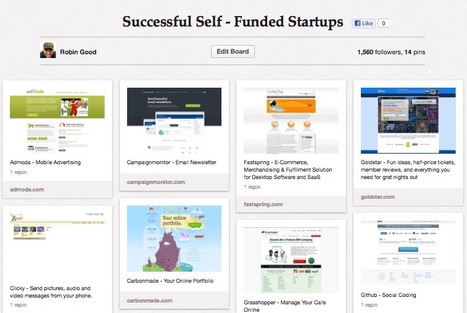
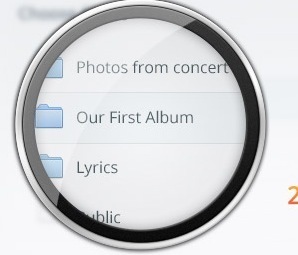




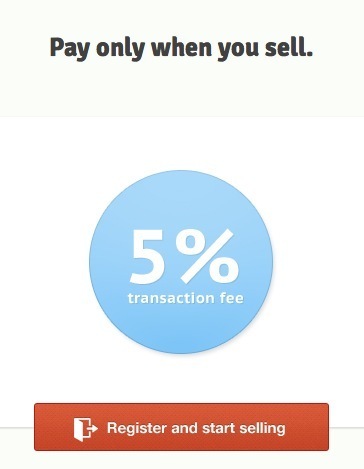


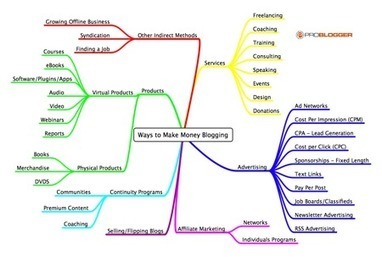

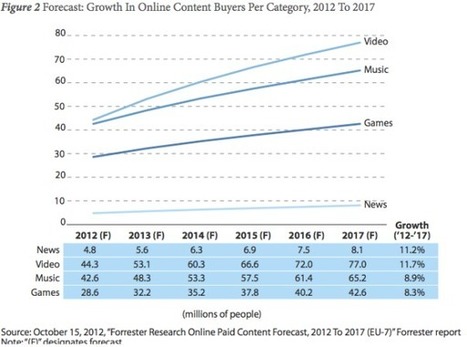
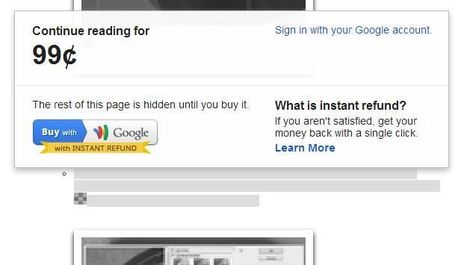

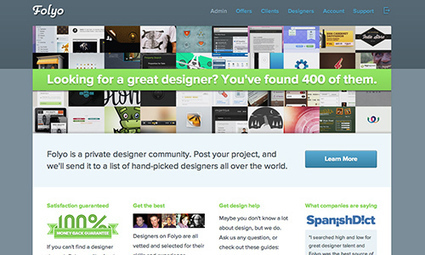
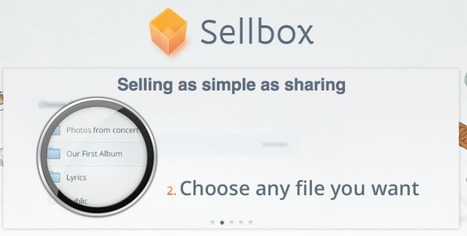

![From Failure To Failure: Small Startups Need To Be Searching For Repeatable and Scalable Business Models [Video] | Online Business Models | Scoop.it](https://img.scoop.it/B7Hx73bz742o6W0pYmrNjjl72eJkfbmt4t8yenImKBVvK0kTmF0xjctABnaLJIm9)







Chill.com has introduced a new interesting service allowing independent content creators of all kinds to sell their own productions easily.
From the original article on GigaOM: "Los Angeles-based Chill.com launched a DRM-free content marketplace for independent creators on Thursday, letting content owners sell streams and HD downloads of their movies, live comedy recordings and other types of videos directly to consumers.
The site’s approach mimics an idea first pioneered by Louis CK a year ago, when the comedian sold a DRM-free download of one of his live sets for $5 online
The new offering, dubbed Chill Direct, is a self-serve marketplace, meaning that anyone can sign up within minutes. The site offers creators the option to determine their own price for their videos, and charge anywhere from $1.99 to $49.99. Seventy percent of that revenue is handed to the creator, and Chill retains 30 percent, which cover the fees for payment services as well as hosting."